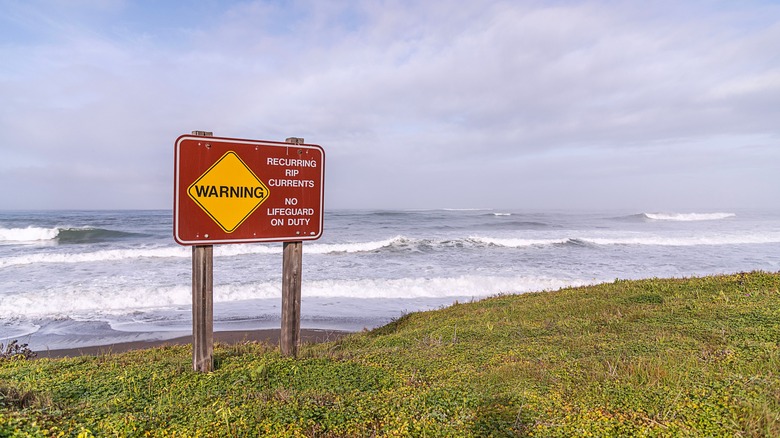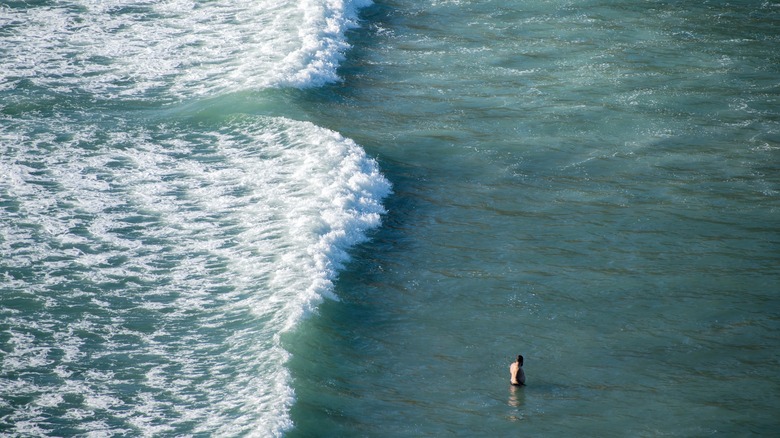The Safety Tip That Could Save Your Life If You're Caught In A Rip Current During Your Beach Vacation
Beach vacations are meant to be blissful escapes from the stress of everyday life. If you're not careful, however, any idyllic holiday can turn disastrous if you don't pay attention to your surroundings. One of the dangers of Costa Rica's beautiful beaches is that a strong rip current can sweep swimmers out to sea.
What exactly is a rip current? It's when the flow of water is altered by either a natural or a human-made structure to create a fast-moving channel of water that pulls out to sea. They're not to be confused with an undertow, the force of the water that sinks below the surface immediately after the crest of a wave. Undertows are less powerful. Rip currents, on the other hand, flow on the surface of the water, as fast as 5 miles an hour. Even an Olympic swimmer can't outswim that swiftly moving current. An estimated 30,000 swimmers are rescued every year from rip currents in the US, with roughly 100 people losing their lives, according to the National Environmental Satellite, Data, and Information Service.
So, what should you do when caught in a rip current? Get safely out of the current by swimming parallel to the shore. Above all, resist the impulse to fight against the current to swim back to shore. That's a sure way to exhaust yourself, increasing the danger of sinking below the waves. "You may be able to escape by swimming out of the current in a direction following the shoreline, or toward breaking waves, then at an angle toward the beach," explains the US Lifesaving Association on its website. "... If you feel you will be unable to reach shore, draw attention to yourself. If you need help, yell and wave for assistance."
What to look for before you swim
Before you head into the water, it's always a good idea to evaluate the conditions and assume that any beach with surf has the possibility of a rip current. It can be difficult to identify where rip currents occur, but there are certain places where they are more likely to develop — river mouths and estuaries where fresh water flows into the sea. Piers are also one of the most dangerous places to swim, in part because they alter the flow of the water, creating the possibility of a rip current.
Also, check the beach for any warning signs or colored flags. Learning what each flag color means can tell you whether the water conditions are safe for swimming. A red flag is commonly used to warn of dangerous waters, signaling that you should not swim.
If the beach is cleared for swimming, it's still a good idea to cast your eye over the shoreline to look for any possible signs of a rip current. Look for a channel of darker water that seems to run counter to the movement of the waves, flushing water out to sea. It may appear as a calm gap of water between breaking waves, or churning, choppy water where it should be calm. It may also be visible as a line of foam or seaweed moving away from the shore. Once you get into the habit of spotting where the rip currents are, you can be sure to steer clear and avoid them.

